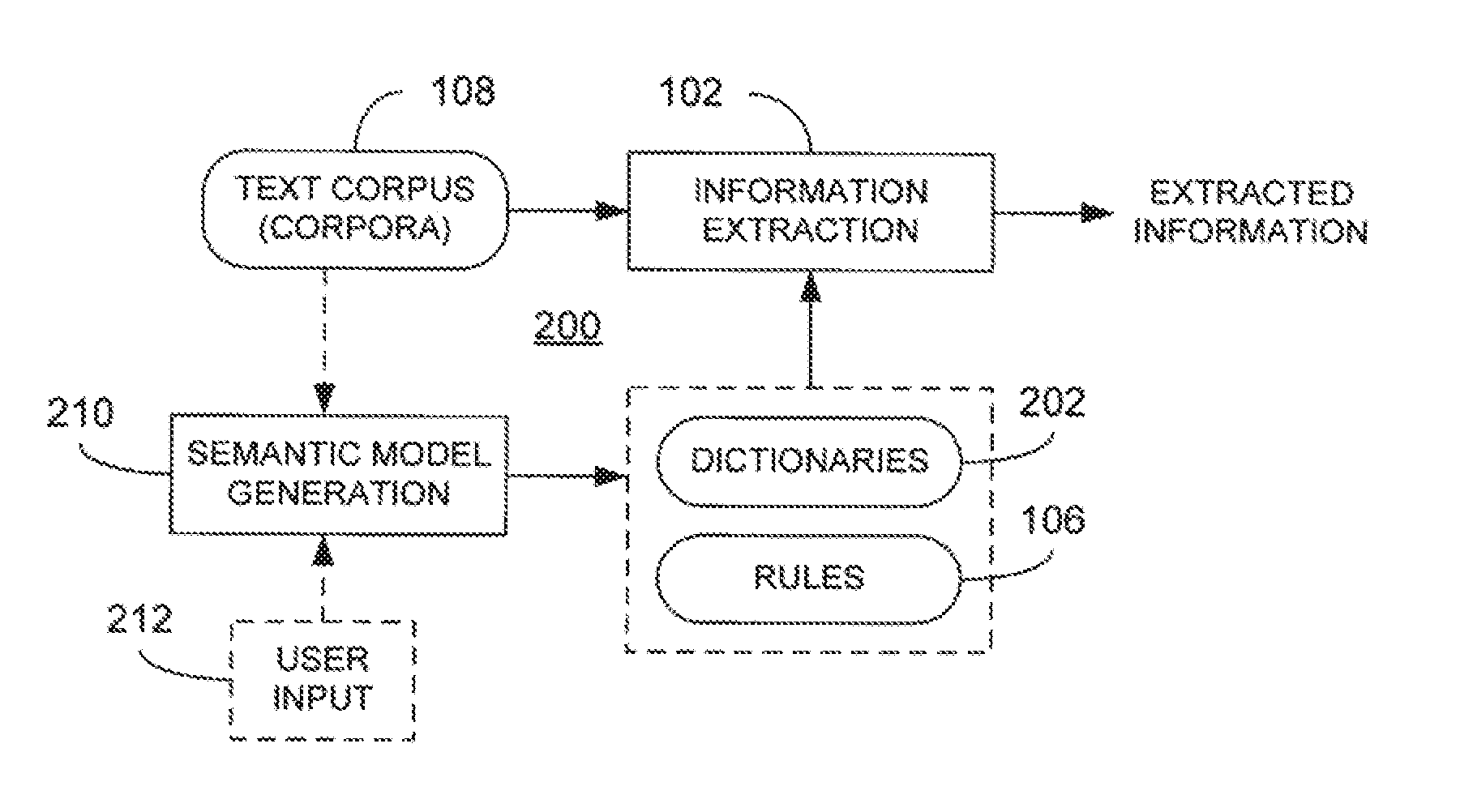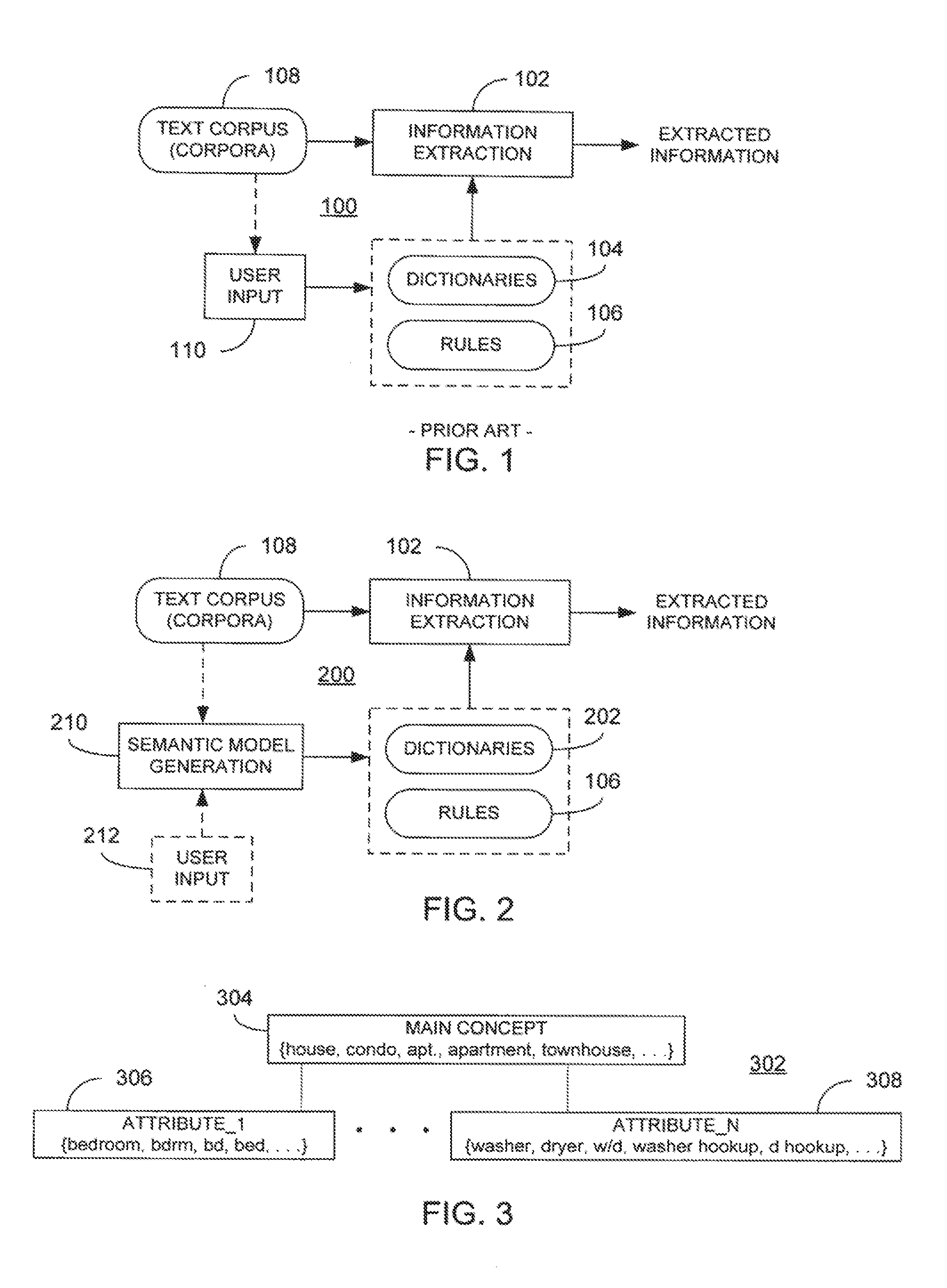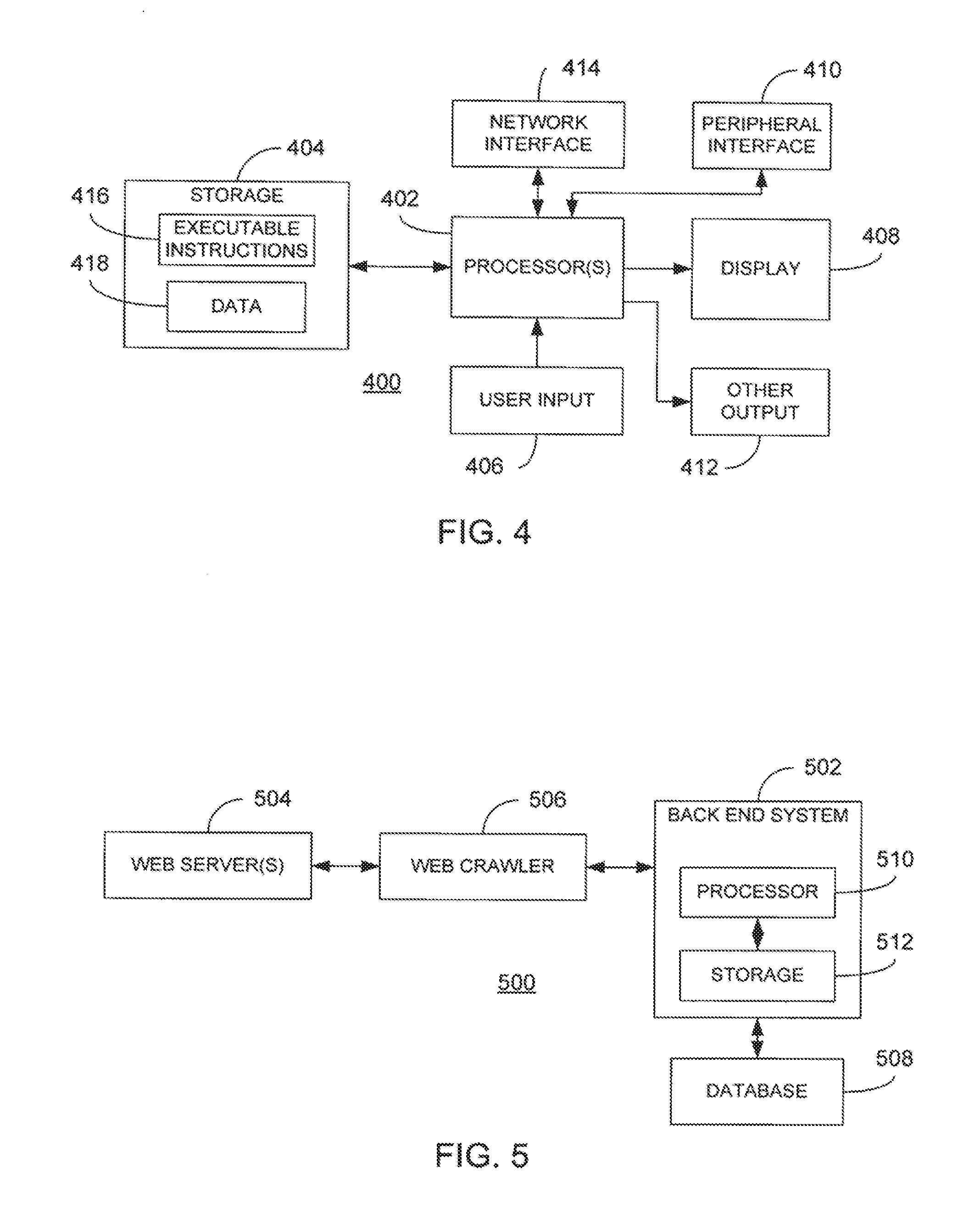Generation of a semantic model from textual listings
a semantic model and textual listing technology, applied in the field of semantic models, can solve the problems of inapplicability of most information extraction techniques developed for formal texts to textual listings, dictionaries and rules are expensive to develop, and require human supervision
- Summary
- Abstract
- Description
- Claims
- Application Information
AI Technical Summary
Benefits of technology
Problems solved by technology
Method used
Image
Examples
Embodiment Construction
[0018]Referring now to FIG. 2, a system 200 is illustrated. As shown, the system 200 comprises elements identical to that shown in FIG. 1, as indicated by like reference numerals, but also comprises a semantic model generation component 210 that provides at least a portion of the semantic model used by the information extraction component 102, specifically one or more dictionaries 202. As described in greater detail below, the semantic model generation component 210 is capable of operating in an unsupervised (i.e., without user intervention) mode or a semi-supervised (i.e., with partial user involvement) mode through incorporation of user input 212 when generating semantic models based on text corpora. In an embodiment, an example of a semantic model generated by the semantic model generation component 210 is illustrated with reference to FIG. 3.
[0019]A feature of most listings is that they typically describe the attributes of a single object, referred to herein as a main concept an...
PUM
 Login to View More
Login to View More Abstract
Description
Claims
Application Information
 Login to View More
Login to View More - R&D
- Intellectual Property
- Life Sciences
- Materials
- Tech Scout
- Unparalleled Data Quality
- Higher Quality Content
- 60% Fewer Hallucinations
Browse by: Latest US Patents, China's latest patents, Technical Efficacy Thesaurus, Application Domain, Technology Topic, Popular Technical Reports.
© 2025 PatSnap. All rights reserved.Legal|Privacy policy|Modern Slavery Act Transparency Statement|Sitemap|About US| Contact US: help@patsnap.com



